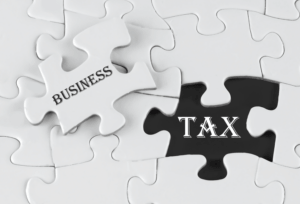
A second statement, called the statement of comprehensive income, would start with net income and include any other comprehensive income (OCI) items. The Wellbourn financial statement (shown in section 3.3 of this chapter) is an example of separating net income and total comprehensive income into two statements. When preparing the income statement (or statement of comprehensive income) it’s important to note that discontinued operations amounts should be reported net of tax. The multiple-step format with its section subtotals makes performance analysis and ratio calculations such as gross profit margins easier to complete and makes it easier to assess the company’s future earnings potential.
What is a statement of comprehensive income?
An entity whose financial statements comply with IFRS Standards must make an explicit and unreserved statement of such compliance in the notes. An entity must not describe financial statements as complying with IFRS Standards unless they comply with all the requirements of the Standards. The application of IFRS Standards, with additional disclosure when necessary, is presumed to result in financial statements that achieve a fair presentation. IAS 1 also deals with going concern issues, offsetting and changes in presentation or classification.
Reporting period
The IFRS Foundation is a not-for-profit, public interest organisation established to develop high-quality, understandable, enforceable and globally accepted accounting and sustainability disclosure standards. At the end of the statement is the comprehensive income total, which is the sum of net income and other comprehensive income. Net income is arrived at by subtracting cost of goods sold, general expenses, taxes, and interest from total revenue. Both documents also only display figures from one particular period — you shouldn’t alter them to reflect what’s currently happening with your company’s finances. Most of them are very helpful for understanding your company’s finances, but they can also be quite complex to put together. In summary, for accounting purposes, assets may be considered as held for sale when there is a formal plan to dispose of the segment.

IAS 1 — Presentation of Financial Statements

Whilst this may be an improvement on the absence of general principles, it might be argued that it does not provide the clarity and certainty users crave. Net income is the traditional measure of a company’s profitability and is calculated as revenues minus expenses. Other comprehensive income includes gains and losses that bypass the income statement and are instead recorded directly in equity. These gains and losses may include items such as unrealized gains or losses on available-for-sale https://www.bookstime.com/ securities, foreign currency translation adjustments, and gains or losses from cash flow hedging activities. So the statement of comprehensive income aggregates income statement (profit and loss statement) and other comprehensive income which isn’t reflected in profits and losses. The purpose of the statement of profit or loss and other comprehensive income (PLOCI) is to show an entity’s financial performance in a way that is useful to a wide range of users.
Income excluded from the income statement is reported under “accumulated other comprehensive income” of the shareholders’ equity section. For example, expenses may be disaggregated as purchases of materials, transport costs, depreciation and amortization, personnel costs and advertising costs. This means, for instance, that it’s not possible to present impairment losses on nonfinancial assets or amortization and depreciation in separate line items in a presentation by function. Another accounting policy election is the presentation of expenses by either their function or nature.
Structure and content of financial statements in general
- As previously stated, comprehensive income is an IFRS concept only; it is not applicable to ASPE.
- Since other comprehensive income is not included in the calculation of net income, other comprehensive income is closed to accumulated other comprehensive income.
- The IFRS income statement follows certain formatting requirements and options different from US GAAP.
- IFRS Accounting Standards are, in effect, a global accounting language—companies in more than 140 jurisdictions are required to use them when reporting on their financial health.
- When expenses are presented by function they are allocated to, for example, cost of sales, selling or administrative activities.
Still, the longer a period your statement looks at, the more complicated it will be. All companies are required to report each of the categories above net of their tax effects. This makes analyses of operating results within the company itself and of its competitors more comparable and meaningful.

Information in financial statements provided in addition to that presented in the primary financial statements. The sorting of assets, liabilities, equity, income, expenses and cash flows based on shared characteristics. The term basic earnings per share refers to IFRS companies with a simple capital structure consisting of common shares and perhaps non-convertible preferred shares or non- convertible bonds. The impact of these types of financial instruments is the potential future dilution of common shares and the effect this could have on earnings per share to the common shareholders.
- The information contained herein is not intended to be “written advice concerning one or more Federal tax matters” subject to the requirements of section 10.37(a)(2) of Treasury Department Circular 230.
- Like other publicly-traded companies, Ford Motor Company files quarterly and annual reports with the SEC.
- Although the format of the income statement is not prescribed, certain items require presentation, if material, either on the face of the income statement or disclosed in the notes to the financial statements.
- Here you can see the exact presentation of the statement of comprehensive income and all other reporting statements required by IFRS.
- Therefore, companies need to be thoughtful when exercising their presentation choices, develop detailed accounting policies and ensure consistent application of such policies with full and transparent disclosures.
- This will usually occur to allow the SOPL to provide more relevant information or provide a more faithful representation of an entity’s performance.
There are several arguments for and against reclassification from OCI to SOPL. If reclassification ceased, then there would be no need to define profit or loss, or any other total or subtotal in profit or loss, and any presentation decisions can be left to specific IFRS standards. It is argued that reclassification protects the integrity of profit or loss and provides users with relevant information about a transaction that occurred in the period. Additionally, it can improve comparability where IFRS standards permit similar items to be recognised in either profit or loss or OCI. According to US GAAP, comprehensive income comprises both net income and other comprehensive income, as well as all changes in equity that arise from non-owner sources during the course of a period. Non-GAAP financial measures (NGFMs) – also sometimes referred to outside the United States as alternative performance measures – are not defined in IFRS.
- IAS 34 was issued in June 1998 and is operative for periods beginning on or after 1 January 1999.
- To guarantee that their financial statements meet the criteria of both IFRS and US GAAP, companies who operate under both standards may need to make modifications.
- In April 2001 the International Accounting Standards Board (IASB) adopted IAS 1 Presentation of Financial Statements, which had originally been issued by the International Accounting Standards Committee in September 1997.
- As a straightforward explanation, the account (other comprehensive income) is used to adjust the increase or decrease in fair value of certain investments.
- The enormous amount of detail in a statement of comprehensive income makes it hugely valuable in financial management.
- However, for the purposes of this chapter, normally a journal entry is not presented to close the other comprehensive income to accumulated other comprehensive income; similar to closing net income to retained earnings.
Accounting entries related to income tax will be covered in the next accounting course (Intermediate Accounting 2). Below is an example of a multiple-step statement of income for Toulon Ltd., an IFRS company, for the year ended December 31, 2020. A revaluation surplus on a financial asset classified as FVTOCI is a good example of a bridging gain. The asset is accounted for at fair value on the statement statement of comprehensive income of financial position but effectively at cost in SOPL. As such, by recognising the revaluation surplus in OCI, the OCI is acting as a bridge between the statement of financial position and the SOPL. On disposal, reclassification ensures that the amount recognised in SOPL will be consistent with the amounts that would be recognised in SOPL if the financial asset had been measured at amortised cost.